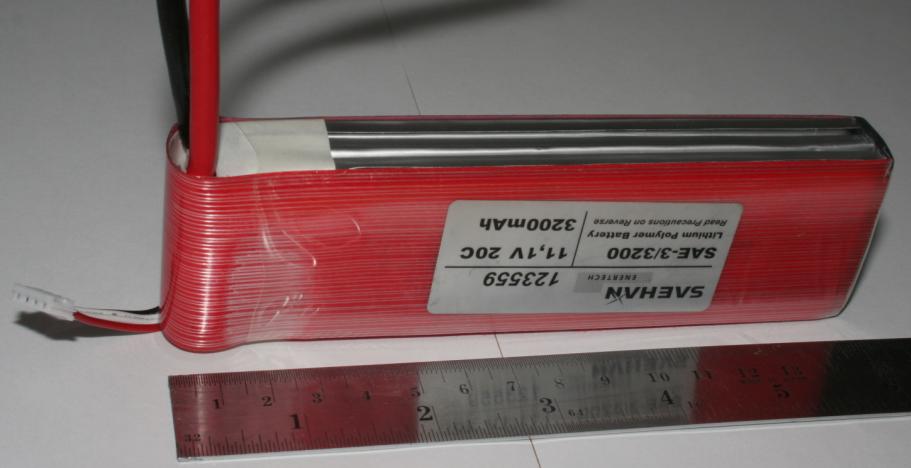LiPo Batteries: Storage & Safety
What are Li-Po batteries and why are they so popular?
Lithium polymer batteries, referred to in shorthand as “Li-Po” batteries, refer to a type of rechargeable battery that uses a polymer electrolyte. This contrasts with the other famous battery types that use a primarily liquid electrolyte, such as nickel-cadmium (Ni-Cd) and lithium-ion (Li-ion) batteries. Li-Po batteries have recently seen wide use in applications where lightweight and high-output batteries were desired, such as in drones and RC cars. But what makes the Li-Po battery so special?
A battery typically contains three (3) crucial parts: an anode, a cathode, and an electrolyte thru which charged particles can travel. It is thru the chemical reactions occurring in both the cathode and the anode, and the movement of charged particles that a battery can store and generate electricity. The traditional cylindrical batteries, such as Ni-Cd, have anode and cathode plates that are layered alternately in a “jelly roll” orientation and separated by a porous layer that contains the electrolyte. This type of battery construction Is considered classical and is already a huge improvement in terms of energy density, allowing for smaller and lighter batteries compared to their predecessors.
The Li-Po batteries improve further on the “jelly roll” battery design. The main component of the Li-Po batteries, as the name implies, is the lithium polymer, which is a very thin and long semi-porous medium. Laminated into this film in an alternate pattern are the anode and cathode layers, commonly aluminum and copper. This long film is folded accordion style, resulting in alternating layers of cathode and anode, with the continuous layer of semi-porous lithium polymer sandwich between them all throughout. This folded matrix is then saturated with a solvent-based organic electrolyte, before it is enveloped in a soft plastic pouch and encased into the battery container. Before the final sealing of the pouch, pressure is applied to the folded matrix to ensure maximum contact between the alternating layers and to remove any excess air.
Due to the very thin polymer and the accordion style folding, a small Li-Po battery can contain a very long polymer film. To illustrate this fact, a 5000mAh Li-Po battery, which is slightly less than half an inch in thickness, can contain a film over 7 feet in length. This battery construction results in a highly compact, high energy density battery. Moreover, the absence of metallic plates in the construction of the battery also means that Li-Po batteries are significantly lighter than their more traditional counterparts.
It is for these reasons that Li-Po batteries have experienced wide use in applications where weight is a critical factor. Probably the most ubiquitous use of Li-Po batteries is in powering radio-controlled vehicles, such as cars, aircraft, and drones. The high discharge rate of Li-Po batteries has also made them the battery of choice for battery-operated airsoft guns. The high energy density of Li-Po batteries has resulted in their use in mobile personal electronics where very small batteries are desired, such as very small and thin mobile phones, tablets, laptops, portable music players, video game controllers, e-cigarettes, and power banks.
Ongoing research for the further improvement of Li-Po batteries has been focused on building higher capacity cells of up to and exceeding 50Ah. Although higher capacity cells can theoretically be built by constructing cell pouches made up of several small capacity cells, this is impractical considering the desired use of high capacity cells, for example in powering electric vehicles. However, the use of high capacity cells will further magnify the hazards inherent to the Li-Po batteries, as seen in the next section.
Safety precautions in the handling and storage of Li-Po batteries
Warning: Lipo batteries can be dangerous and can cause fires or explode. Excercise extreme caution when purchasing, using, and storing chargers, storage cases, and batteries of all types. Follow the manufacturer’s recommendations and never leave a charging battery unattended.
Li-Po batteries are subject to practically the same hazards as any other Li-ion battery. In some cases, handling and storage of Li-Po batteries even demands more safety precautions. In the interest of safety and the preservation of your battery, listed below are the precautionary measures in the handling and storage of your Li-Po batteries.
- Do not overcharge or subject your Li-Po batteries to high temperatures, as this may cause partial vaporization of the solvent-based electrolyte. At best, this will lead to an expansion of the battery case and a decrease in the capacity of the Li-Po battery. At worst, this may lead to rupturing of the case, leakage of the flammable electrolyte, and fire.
- In relation to item number 1, do not leave a Li-Po battery charging unsupervised. If possible, it will be safer to charge the battery in a fireproof location, or inside a Li-Po safe, fireproof bag. You need to be able to respond immediately if a Li-Po battery shows puffing or smoking, as battery-related fires can escalate very quickly.
- Do not use, store, or charge a battery that has visible signs of damage, puffing or expansion. A battery that has undergone expansion due to volatilization of electrolytes is very likely compromised, and has a higher chance of leakage. Dispose of the battery using the proper disposal procedures.
- It is wise to invest in a Li-Po safe, fireproof and explosion-proof bag. It is highly discouraged to use insulated travel packs for Li-Po storage, as these are commonly constructed using a combination of foam and plastic, which increase fire hazard.
- When travelling, always bring your Li-Po batteries in your carry-on baggage, as checking them in is against IATA regulations. Some precautions may have to be taken during transportation to avoid short circuit of the batteries, such as taping the individual terminal or storing individual batteries separately.
- For long term storage of Li-Po batteries (more than 2 days), it is discouraged to leave them at a fully charged state. If you are not expecting that your Li-Po batteries will be used in the next few days, you will need to discharge the battery to around 40% to 50% of its full capacity (around 3.8 V per cell).
- Do not allow your Li-Po battery to discharge completely. The rule of thumb is to not allow the battery to be discharged below 3.0V, as doing so results in permanent damage to the battery. Completely discharging your battery can result in the permanent reduction of capacity, or at times, total loss of the battery’s capacity to store charge.
- Although storing the batteries in high temperature is more damaging, storing them in very low temperatures can also result in some condensation upon heat-up, which can result in a short circuit. Most batteries also do not function well in very low temperatures, as this significantly slows down the rate at which chemical reactions occur.
Caveats in the use of Li-Po batteries
Li-Po batteries are not the be-all, end-all solution to the need for a lightweight and high capacity power source, as evident by the still wide use of traditional Ni-Cd, Li-ion, or even acid batteries. In addition to its inherent hazards and the breadth of precautions you need to take, Li-Po batteries are still significantly more costly to manufacture than their older counterparts.
As outlined above, measures can be made to avoid loss of the capacity of your Li-Po batteries. However, typical Li-Po batteries do not last longer than 300 cycles. To increase lifespan of your battery, do not store them in an overcharged or undercharged state, and always store them in room temperature. It is critical that you do not allow the batteries to run until they are dead. Overcharging, or “trickle charging” the batteries, aside from decreasing the lifespan of your battery, may also lead to your battery catching fire.


